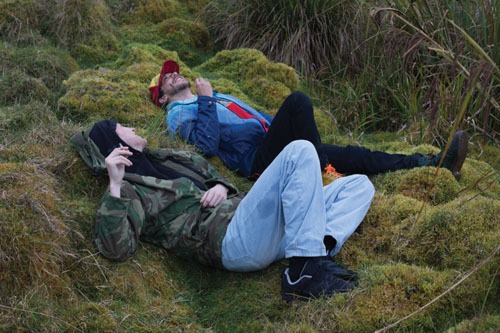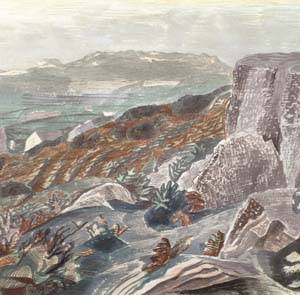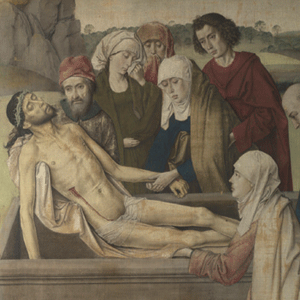
This article is a preview from the Summer 2017 edition of New Humanist. You can find out more and subscribe here.
The photography of Wolfgang Tillmans is marked by his effortless slide between what, in the past, we might have termed “high and low culture” – between the gallery and the flyposter, the monograph and the magazine. In his latest show, currently at the Tate Modern until 11 June, there’s a room devoted to the cheap end of his work: tables displaying the pop culture ephemera of flyers, posters and magazines dating back 25 years, mostly focused on youth culture, club nights and fashion.
This was where I first encountered the work of Tillmans, as a teenager in the 1990s – laid out in high-gloss magazines on my bed, tucked up in a small bungalow on the damp and mulchy outskirts of a northern English town. They were gay lifestyle magazines I’d maybe stolen but, I think, probably openly bought from WH Smith on the high street in an act of self-realisation.
The content of magazines like Attitude was, to me, unbelievably pornographic; not in their depictions of the male body, but in their representation of a confident gay male culture, where not only did people appear happy but casual in that happiness. To see gayness as friendship accompanied by cheap, joyful music was the reverse of the humiliation I understood as my gayness and it genuinely shook my core.
Tillmans’ photos always sat apart in these pages. Other shoots had a mediated veneer: the boys looked straight at you, or held their bodies in such a way that you were always extremely aware of the presence of the camera. In Tillmans’ work, though, I watched gay friendships and love affairs of an unplaceable nature. You were watching from within a society, a conspiracy of lovers. And the bodies were different, too. Scarred, dirty, alive, hairy, unlike the clean white twinks on the surrounding pages. The normal photoshoots aroused me. Tillmans gave me another, more difficult sensation: an anxiety beginning in the diaphragm, shooting up to the heart and down to the gut at the same time. The dirty democracy of these real people felt more out of reach than the airbrushed torsos.
Born in Germany in 1968 and dividing his time between there and London, Tillmans provokes a sense of belonging in many gay men of a certain generation. The images of a form of post-Berlin Wall freedom – Love Parade, cheap rent, Easyjet, circuit parties, Europe – were all representations of a life that was, to me, an escape from the North. When I was growing up, masculinity was still shaped by the Gallagher brothers, Manchester United and laddism. Tillmans offered a sensual representation of a forbidden gay toughness. Though still largely white and macho, such representations stood out from most of the images of maleness that surrounded me. And what’s more, they came from a gay scene that actually existed somewhere. This was verging on magic.
I’ve said this moment of a gay Berlin–London identity is “post-Berlin Wall”, but really it’s a moment tied more properly to what followed – a moment of liberal triumph for the EU, and the entrenchment of a European form of neoliberalism. Beneath the manifestations of Love Parade, Easyjet, a studio in both cities, lie the Treaty of Rome, the Schengen Agreement, the European Open-Skies Treaty and the opening up of cheap real estate in the former East Germany. Tillmans was a prominent Remain campaigner in the UK’s EU referendum last year and the set of posters he designed for the campaign acknowledged these political-economic realities. “People can move and work in whichever EU country they like,” read the press release for the posters. “In fact, 1.5 million Brits enjoy this right just now, and due to deregulation of air travel millions enjoy cheap air travel to Europe.”
I found the utopianism of those posters thoughtless. It seemed glib to hold up a party lifestyle in defence of an EU that is highly unequal internally and pursues external border policies that have contributed to the deaths of thousands of refugees. But Tillmans’ career doesn’t just coincide with this European moment; it rests upon it. The link between lived experiences, however cloistered, and his political imagination is extremely direct. A privileged world whose existence rests on violence: that’s the world in which I also live. If the political image doesn’t directly reflect the life as lived, wrote the situationist philosopher Raoul Vaneigem, it speaks with a corpse in its mouth. And if that image offends me, then my own life offends me; it’s not Tillmans’ fault queer love is no longer subversive.
There’s a filial relationship between Tillmans’ work and the writings of Christopher Isherwood, another exile living between London and Berlin. Isherwood marks a formative point in the history of the gay exile, having moved from London at the end of the 1920s and spending the next few years building a way of life around the club, lovers and so on. He felt in Berlin a release from his repressive English upbringing, and especially the timid homosexuality of the Oxbridge set he was part of. Isherwood found release in searching out proletarian lovers within the more licentious and liberated subcultures of Weimar Berlin. He’s known as a chronicler of those subcultures, but to me his writing is more interesting in its understanding of the relationship of the observer and the observed. He starts his most famous memoir of the period, Goodbye to Berlin, reflecting on the writer as someone capturing moments in time:
I am a camera with its shutter open, quite passive, recording, not thinking. Recording the man shaving at the window opposite and the woman in the kimono washing her hair. Some day, all this will have to be developed, carefully printed, fixed.
There’s a technical problem with Isherwood’s metaphor. Fixing on paper is quite different from fixing the image on film; someone needs to close the shutter to capture the scene. That person we call the photographer. If you left the shutter open, quite passive as Isherwood suggests, light would flood through the aperture. No form would be recorded; just light.
It’s tempting to buy his idea of the passive observer, but it’s disingenuous. Isherwood repeatedly allows the politics of the time to wash past him just as much as the relationships. The democracy of the passive observer falters if we acknowledge the power of the photographer’s gaze, his role as an artist and not a technician.
I’m not sure we can buy Tillmans as such an observer, passively recording, either. As the person who presses the shutter on today’s Berlin-London social scene Tillmans becomes a powerful catalyst in the things he documents; he is party to the party, helping create the aesthetic of the lifestyle. The accompanying notes to Concorde Grid (1997) – which hangs permanently in the Tate Britain; a few copies are in the Tate Modern show – quote him saying his pictures “are a representation of an unprivileged gaze or view [...] I like to assume exactly the position that everybody can take.” I’m not sure if he wrote that at the time, but in any case that position on the subject now sounds impossibly dated. His photograph Lampedusa (2008), showing the broken-up migrant boats of the Mediterranean, blows apart the earlier idea of the Berlin photographer as the unprivileged eye; not just in terms of wealth, but in terms of who documents the undocumented; who sees, who is seen, and who isn’t.
Tillmans’ later photos, such as Griefbar 29 (2014), have shifted from bodies to earthy abstraction: smoke and water droplets, smooth matt colour fades on bent and twisted cardboard. I wonder if this is acknowledgment that his charismatic presence becomes a shadow over the lens. These photos are beautiful, utterly bourgeois and a frank admission. They’re what happens when you don’t know when to close the shutter on a social relationship any more. They show what we all knew: that the old form of democracy is in crisis.

